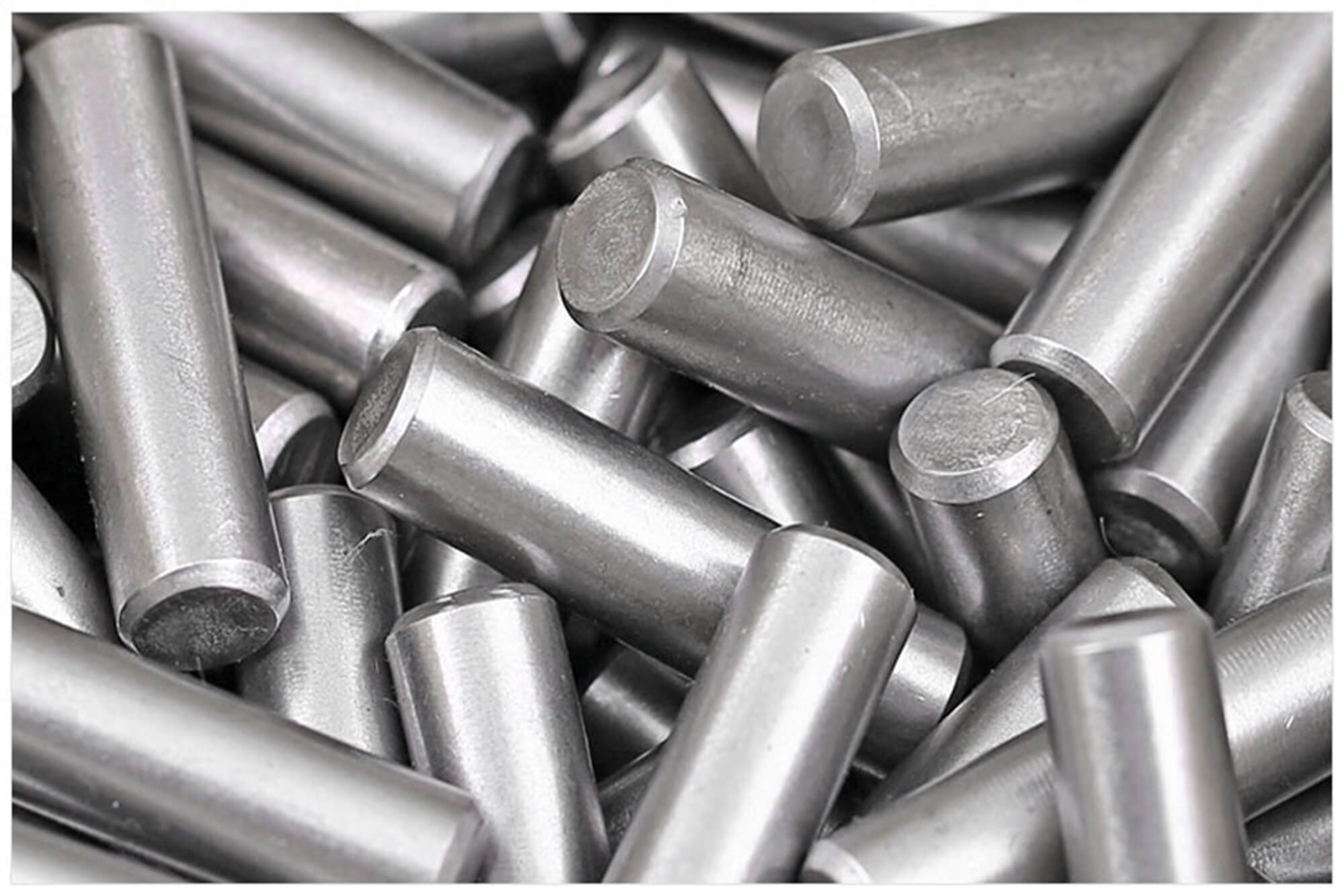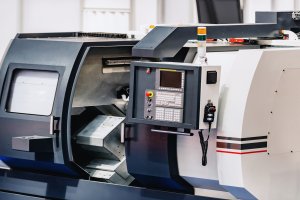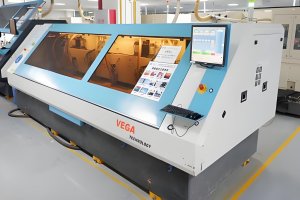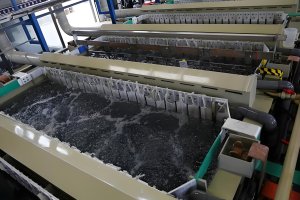1.Introduction: Why Medium Carbon Steel Matters
As an engineer who’s worked hands-on with materials in demanding applications, I’ve seen firsthand how medium carbon steel delivers an unmatched balance of strength, ductility, and toughness. Unlike its low-carbon cousin, which bends easily but lacks strength, or high-carbon steel, which is hard but brittle, medium carbon steel hits a sweet spot. Its ability to be fine-tuned through heat treatment and optimized via CNC machining makes it a go-to material for everything from automotive gears to railway tracks. In this guide, I’ll share my insights, drawn from years of specifying and working with medium-carbon alloys, to explore their composition, properties, heat treatment, CNC machining integration, key grades, and industrial applications. Whether you’re an engineer or a manufacturer, this article will help you harness the full potential of medium carbon steel.Meta-Description: Explore medium carbon steel’s composition, heat treatment, CNC machining, and key grades like AISI 1045 and 4140. Learn from real-world insights to optimize this versatile material for industrial applications
.2. What Is Medium Carbon Steel? Composition and Microstructure
Medium carbon steel, an iron-based alloy with 0.30% to 0.60% carbon and 0.60% to 1.65% manganese, is a material I’ve relied on for projects requiring both strength and adaptability. Carbon is the star of the show, driving hardness and strength, while manganese boosts hardenability, making medium-carbon alloys responsive to heat treatment. In my experience, trace elements like silicon or chromium in specific grades can further enhance performance, such as improving wear resistance in CNC-machined parts.In its raw state, medium carbon steel’s microstructure is a mix of soft ferrite and harder pearlite. I’ve observed that higher carbon content shifts the balance toward pearlite, giving the steel a stronger baseline. But the real magic happens during heat treatment, where precise control transforms this structure into something tailored for high-stress applications like precision CNC-machined gears.Table 1: Chemical Composition of Medium Carbon Steel
Alt-Text: Table detailing the chemical makeup of medium carbon steel for engineering applications.
| Element | Typical Percentage (%) | Role in Medium Carbon Steel |
| Carbon (C) | 0.30 – 0.60 | Drives hardness and strength; key to heat treatment response. |
| Manganese (Mn) | 0.60 – 1.65 | Enhances hardenability and wear resistance; prevents brittleness. |
| Phosphorus (P) | ≤ 0.040 | Impurity; kept low to ensure toughness. |
| Sulfur (S) | ≤ 0.050 | Impurity; small amounts can aid machinability in CNC processes. |
3. The Balanced Properties of Medium Carbon Steel
In my work, medium carbon steel stands out for its versatility. In its normalized state, it offers a tensile strength of 565–630 MPa and a Brinell hardness of 160–210 HB—solid starting points that can double with proper heat treatment. I’ve specified medium-carbon alloys for components requiring both strength and ductility, like axles and shafts, because they hold up under dynamic loads without fracturing.From a CNC machining perspective, medium carbon steel is a dream in its annealed state, allowing clean cuts and precise tolerances. However, I’ve learned that hardening is best done post-machining to avoid tool wear. Weldability is trickier—preheating and post-weld treatments are often necessary to prevent cracks, as I discovered on a project where improper welding led to costly rework. Corrosion resistance is a weak point, so I always recommend coatings like zinc plating for parts exposed to harsh environments.Table 2: Mechanical & Physical Properties (Normalized)
Alt-Text: Table of medium carbon steel’s properties in normalized condition for CNC machining and applications.
| Property | Metric Value | Imperial Value | Notes |
| Density | 7.85 g/cm³ | 0.284 lb/in³ | Standard for steels; affects CNC machining weight calculations. |
| Yield Strength | 310 – 420 MPa | 45,000 – 60,200 psi | Baseline for structural components. |
| Tensile Strength | 565 – 630 MPa | 81,900 – 91,000 psi | Can double post-heat treatment. |
| Hardness (Brinell) | 163 – 210 HB | 163 – 210 HB | Ideal for machining before hardening. |
| Modulus of Elasticity | ~200 GPa | ~29,000 ksi | Measures stiffness for design. |
| Thermal Conductivity | ~49 – 52 W/m-K | ~346 BTU in/hr·ft²·°F | Impacts heat treatment and machining. |
| Melting Point | ~1420 – 1500 °C | ~2590 – 2730 °F | Key for forging and welding processes. |
4. Medium Carbon Steel vs. Other Carbon Steels
I’ve often had to choose between low-, medium-, and high-carbon steels for projects, and medium carbon steel consistently shines for its balance. Low-carbon steel (<0.30% carbon) is great for ductile parts like car panels but can’t be hardened significantly. High-carbon steel (>0.60% carbon) is perfect for wear-resistant tools but is too brittle for dynamic loads. Medium-carbon alloys, with 0.30%–0.60% carbon, offer the best of both worlds, especially when paired with heat treatment and CNC machining for precision components like gears.In one project, I opted for medium carbon steel over high-carbon steel for a crankshaft because its toughness after tempering reduced failure risks under cyclic stress. The ability to CNC machine these alloys to tight tolerances before hardening makes them a cost-effective choice for performance-driven applications.Table 3: Carbon Steel Comparison
Alt-Text: Table comparing low, medium, and high carbon steels for engineering and machining.
| Feature | Low Carbon Steel | Medium Carbon Steel | High Carbon Steel |
| Carbon Content | < 0.30% | 0.30% – 0.60% | > 0.60% |
| Strength | Low | Medium to High | Very High |
| Hardness | Low | Medium (Heat-Treatable) | Very High |
| Ductility | Excellent | Good | Poor |
| Weldability | Excellent | Fair (Needs Pre/Post-Heating) | Poor |
| Toughness | Good | Excellent (Tempered) | Low (Brittle) |
| CNC Machinability | Good | Excellent (Annealed) | Poor (Hard) |
| Applications | Beams, panels | Gears, axles, CNC-machined parts | Tools, springs |
5. Heat Treatment: The Key to Performance
Heat treatment is where medium carbon steel truly transforms. By heating to 820–920°C to form austenite, then quenching in water or oil, you create a hard, brittle martensite structure. Tempering at 400–650°C restores toughness, yielding tempered martensite. I’ve seen this process turn AISI 1045 medium carbon steel into gears that withstand millions of cycles without failure.In my experience, normalizing is a critical first step to refine grain structure before CNC machining, ensuring uniformity. Hardening maximizes strength, but I once overlooked tempering on a batch of parts, resulting in brittle failures—lesson learned! Each step requires precision, especially when preparing components for CNC machining, where surface finish and dimensional accuracy are critical.
Table 4: Heat Treatment Processes
| Process | Objective | Temperature (°C) | Cooling Method | Microstructure | Effect on Properties |
| Normalizing | Refine grain size | 870 – 920 | Air | Ferrite & Pearlite | Enhances machinability for CNC. |
| Hardening | Maximize hardness | 820 – 850 | Water/Oil | Martensite (>80%) | Boosts strength, increases brittleness. |
| Tempering | Increase toughness | 400 – 650 | Air | Tempered Martensite | Balances hardness and toughness. |
6. CNC Machining Medium Carbon Steel
CNC machining is where medium carbon steel proves its versatility. In its annealed state, it cuts smoothly, allowing me to achieve tolerances as tight as ±0.01 mm for precision gears. I’ve found that AISI 1045, with its balanced properties, is a favorite for CNC-machined shafts due to its machinability and post-treatment strength. However, machining hardened medium-carbon alloys is challenging—tool wear skyrockets, so I always machine before hardening.One memorable project involved CNC machining AISI 4140 for aerospace components. The alloy’s chromium and molybdenum content demanded slower cutting speeds but delivered exceptional fatigue resistance after heat treatment. My tip: use high-quality carbide tools and optimize feeds to minimize heat buildup, ensuring a flawless finish for medium carbon steel parts.
7. Key Grades of Medium Carbon Steel
Medium carbon steel grades are tailored for specific needs. AISI 1045 (0.45% carbon) is my go-to for cost-effective, CNC-machined parts like gears and bolts due to its balance of strength and toughness. AISI 1050 (0.50% carbon) and AISI 1060 (0.60% carbon) offer higher hardness, perfect for tools and forged components. AISI 4140, with chromium and molybdenum, is a standout for high-stress applications like aerospace parts, where I’ve specified it for its superior fatigue resistance.Table 5: Medium Carbon Steel Grades
Alt-Text: Table of medium carbon steel grades for CNC machining and industrial use.
| Grade | Type | Carbon % | Alloying Elements | Characteristics | Applications |
| AISI 1045 | Plain Carbon | 0.45% | None | Balanced strength, machinability | CNC-machined gears, shafts, bolts |
| AISI 1050 | Plain Carbon | 0.50% | None | High hardness, good for forging | Tools, springs, CNC-machined parts |
| AISI 1060 | Plain Carbon | 0.60% | None | High wear resistance | Blades, forged components |
| AISI 4140 | Alloy (Chromoly) | 0.40% | Cr: 0.8–1.1%, Mo: 0.15–0.25% | Superior strength, fatigue resistance | Aerospace parts, drill tools |
8. Industrial Applications of Medium Carbon Steel
Medium carbon steel is a workhorse across industries. In automotive, I’ve used AISI 1045 for CNC-machined crankshafts and axles, where its fatigue resistance handles cyclic loads. In machinery, medium-carbon alloys form robust couplings and shafts, often machined to precise specifications. Railway tracks and wheels, made from medium carbon steel, endure extreme wear, as I’ve seen in infrastructure projects. Agricultural tools like hammers and plow blades benefit from its hard edge and tough core, a combination I’ve leveraged for durable implements.
9. Conclusion: A Material That Delivers
From my perspective, medium carbon steel’s strength lies in its tunability and cost-effectiveness. Whether it’s CNC machining a precision gear or heat-treating an axle for durability, medium-carbon alloys adapt to the task. My experience has taught me that selecting the right grade—like AISI 1045 for versatility or AISI 4140 for high-stress applications—and pairing it with optimized heat treatment and CNC machining unlocks unparalleled performance.
FAQ:
- What is medium carbon steel, and why is it used in engineering?
Medium carbon steel is an alloy with 0.30% to 0.60% carbon, offering a balance of strength, ductility, and toughness. It’s widely used in engineering because it can be heat-treated to enhance properties like hardness and fatigue resistance, making it ideal for components like gears, shafts, and CNC-machined parts that require durability under dynamic loads.
2. How does heat treatment improve medium carbon steel’s performance?
Heat treatment transforms the microstructure of medium carbon steel. Processes like normalizing refine grain size, quenching creates a hard martensite structure, and tempering balances toughness and hardness. For example, I’ve seen heat-treated AISI 1045 medium carbon steel achieve double the tensile strength, perfect for high-stress applications like axles.
- Why is medium carbon steel preferred for CNC machining?
In its annealed state, medium carbon steel is highly machinable, allowing CNC machines to achieve tight tolerances (e.g., ±0.01 mm). Grades like AISI 1045 are cost-effective and cut smoothly, reducing tool wear. Based on my experience, machining before hardening ensures precision while maintaining efficiency in manufacturing.
- What are the most common grades of medium carbon steel?
Common grades include AISI 1045 (0.45% carbon) for general-purpose parts like gears, AISI 1050 and 1060 for higher hardness in tools, and AISI 4140, a chromoly alloy, for high-strength applications like aerospace components. Each grade of medium carbon steel is chosen based on specific performance needs.
- Can medium carbon steel be welded effectively?
Welding medium carbon steel is possible but requires care. Its higher carbon content can lead to cracking, so I recommend preheating (to ~200°C) and post-weld heat treatment to relieve stresses. In my projects, proper welding techniques have ensured strong joints for medium-carbon alloy components like shafts.
- What are the limitations of medium carbon steel?
Medium carbon steel has poor corrosion resistance, requiring coatings like zinc plating for protection. It’s also less ductile than low-carbon steel and can be brittle if not properly tempered. In CNC machining, hardened medium-carbon alloys increase tool wear, so I always machine them in the annealed state.
- How does medium carbon steel compare to low- and high-carbon steel?
Low-carbon steel (<0.30% carbon) is more ductile but weaker, suitable for panels. High-carbon steel (>0.60% carbon) is harder but brittle, ideal for tools. Medium carbon steel (0.30%–0.60% carbon) offers a balance, with heat treatment and CNC machining enabling tailored properties for parts like crankshafts.
- What industries rely on medium carbon steel?
Medium carbon steel is critical in automotive (e.g., CNC-machined gears, axles), machinery (e.g., shafts, couplings), infrastructure (e.g., railway tracks), and agriculture (e.g., plow blades). Its versatility and tunability make it a staple in applications requiring strength and wear resistance.
Reference:
https://en.wikipedia.org/wiki/Carbon_steel;
https://simple.wikipedia.org/wiki/Carbon_steel;
https://www.youtube.com/watch?v=W_5AOFKKb8o;
https://www.sciencedirect.com/topics/chemistry/carbon-steel;
Other Articles You Might Enjoy
- Comprehensive Guide to CNC Machining: Carbon Steel vs Stainless Steel
Choosing the right material for CNC machining is a crucial decision for any manufacturer or engineer. Two of the most commonly used materials in various industries are carbon steel and…
- Low carbon steel in CNC machining offers affordable and reliable solutions
Why Low Carbon Steel Is Ideal for CNC Machining Low carbon steel, often referred to as mild steel, is a versatile material favored across industries for its balance between affordability…
- What Factors Should You Consider When Selecting a Precision CNC Machining Partner for Carbon Steel?
What Are the Key Technical Challenges in Precision CNC Machining of Carbon Steel? Precision CNC machining of carbon steel involves several technical challenges that need to be addressed to achieve…
- The Essential Guide to Selecting the Right Metal for CNC Machining: Stainless Steel vs. Carbon Steel
Introduction to CNC Machining and Metals In the realm of creation and manufacturing, Computerized Numerical Control (CNC) machining serves as a critical tool. It is an advanced system involving the…
- Comprehensive Guide to High Carbon Steel Properties and CNC Machining Solutions
Introduction When it comes to advanced manufacturing and precision machining, high carbon steel stands out as a critical material in industries such as automotive, aerospace, toolmaking, and industrial machinery. Its remarkable hardness,…






